Experimental Study on Prefabricated Steel Fiber-Reinforced Concrete Casing Arch Method for Strengthening Cracked Lining in Confined Spaces
Abstract
1. Introduction
2. Experimental Design and Loading Scheme
2.1. Experimental Purposes
2.2. Specimen
2.3. Experimental Preparation and Loading
3. Experimentation Results
3.1. Reinforcement Performance of Steel Fiber-Reinforced Concrete
3.2. Reinforcement Performance of Reinforced Concrete
4. Establishment of Numerical Test Model
4.1. Model Profile
4.2. Material Parameter
4.3. Material Constitutive Model
4.3.1. Concrete Constitutive Model
- (1)
- Compressive Constitutive Model
- (2)
- Tensile Constitutive Model
4.3.2. Steel Constitutive Model
4.3.3. Contact Surface Configuration
4.4. Simulated Calculation Conditions
5. Modeling Results
5.1. Reinforcement Performance of Different Materials at Variable Cross-Section
5.2. Influence of Variable Section Thickness of Sleeve Arch on Reinforcement Performance
5.2.1. Reinforcement Performance of the Medium Crack Lining
5.2.2. Reinforcement Performance of the Severely Cracked Lining
6. Conclusions
Author Contributions
Funding
Institutional Review Board Statement
Informed Consent Statement
Data Availability Statement
Conflicts of Interest
References
- He, C.; Wang, B. Research progress and development trends of highway tunnels in China. J. Mod. Transp. 2013, 21, 209–223. [Google Scholar] [CrossRef]
- Wang, X.; Lai, J.; Qiu, J.; Xu, W.; Wang, L.; Luo, Y. Geohazards, reflection and challenges in Mountain tunnel construction of China: A data collection from 2002 to 2018. Geomat. Nat. Hazards Risk 2020, 11, 766–785. [Google Scholar] [CrossRef]
- Yang, C.; Hu, Q. Research on disease detection and treatment technology of highway tunnel, China. Mod. Tunn. Technol. 2021, 58, 237–245. [Google Scholar]
- Zhang, N.; Zhu, X.; Ren, Y. Analysis and Study on Crack Characteristics of Highway Tunnel Lining. Civ. Eng. J. 2019, 15, 1119–1123. [Google Scholar] [CrossRef]
- Wang, P.; Wan, F.; Hao, X. Study on optimization of lining structure reinforcement scheme of Dugongling tunnel. J. Highw. Transp. Res. Dev. 2021, 30, 32–38. [Google Scholar]
- Xu, C.; Wang, H. Engineering geological characteristics and engineering hazard analysis of Dugongling Tunnel. J. Highw. Transp. Res. Dev. 2019, 36, 93–99. [Google Scholar]
- Meng, J. Cause analysis and prevention measures of highway tunnel lining cracks, China. Transp. World 2023, Z1, 282–285. [Google Scholar]
- Tang, C.; Liu, C.; Feng, X. Analysis of crack propagation mechanism of existing tunnel lining. Sichuan Archit. 2022, 42, 112–114. [Google Scholar]
- An, D.; Chen, Z.; Meng, L.; Cui, G. Application of fiber-reinforced concrete lining for fault-crossing tunnels in meizoseismal area to improving seismic performance. Adv. Mech. Eng. 2020, 12, 1687814020944023. [Google Scholar] [CrossRef]
- Hou, Q. Analysis of the application of steel fiber concrete technology in road and bridge construction. Sichuan Build. Mater. 2023, 49, 7–8+11. [Google Scholar]
- Gong, X. Application of steel fiber reinforced concrete technology in road and bridge construction. Creat. Living 2021, 10, 56–57. [Google Scholar]
- Congro, M.; de Alencar Monteiro, V.M.; de Andrade Silva, F.; Roehl, D.; Brandão, A.L.T. A novel hybrid model to design fiber-reinforced shotcrete for tunnel linings. Tunn. Undergr. Space Technol. 2023, 132, 104881. [Google Scholar] [CrossRef]
- Liu, S. The Application of Steel Fiber Concrete Technology in Highway Bridge Construction. Constr. Mach. Maint. 2022, 2, 84–85. [Google Scholar]
- Tian, Z.; Liu, B. Application Research on Superimposed Arch Reinforcement Technology of Highway Tunnel. Highway 2021, 66, 339–344. [Google Scholar]
- Yang, Y. Discussion on the application of composite arch reinforcement technology in highway tunnel. TranspoWorld 2022, 30, 52–54. [Google Scholar]
- Su, C.; An, N.N.; Wang, Z. Mechanical properties of shotcrete arch reinforcement structure of highway tunnel. J. Archit. Civ. Eng. 2020, 37, 203–213. [Google Scholar]
- Wang, X.; Fan, F.; Lai, J.; Xie, Y. Steel fiber reinforced concrete: A review of its material properties and usage in tunnel lining. Structures 2021, 34, 1080–1098. [Google Scholar] [CrossRef]
- Hu, X. Application and Research of Steel Fiber Reinforced Concrete in Tunnel Construction. Ph.D. Thesis, Shijiazhuang Railway University, Shijiazhuang, China, 2023. [Google Scholar]
- Cui, G.; Sun, L.; Zuo, K.; Wang, M.; Jing, H. Review on mechanical properties of fiber-reinforced concrete tunnel lining. Mod. Tunn. Technol. 2019, 56, 1–7. [Google Scholar]
- He, X. Application of steel fiber in tunnel shotcrete. Resour. Inf. Eng. 2022, 37, 90–92+96. [Google Scholar]
- Wu, L.; Yan, Z. Application analysis of steel fiber reinforced concrete technology in road and bridge construction. Sci. Technol. Innov. 2024, 7, 173–175. [Google Scholar]
- Huang, J. Experimental Study on Mechanical Properties and Impermeability of Hybrid Fiber Reinforced Concrete. Ph.D. Thesis, Wuhan Institute of Technology, Wuhan, China, 2012. [Google Scholar]
- Cao, Y. Experimental study on the influence of steel fiber type on the properties of steel fiber reinforced concrete. J. Lanzhou Jiaotong Univ. 2019, 38, 1–8. [Google Scholar]
- Thorenfeldt, E. Mechanical properties of high- strength concrete and applications in design. In Proceedings of the Symptom Utilization of High-Strength Concrete, Stavanger, Norway, 15–18 June 1987. [Google Scholar]
- Zhou, N.; Wang, L.; Wang, G.; Yang, N. Analysis of seismic performance of semi-rigid connection steel frame. Ind. Build. 2009, 39, 112–115+85. [Google Scholar]
- Luo, Q. Nonlinear finite element analysis of connections between concrete-filled square steel tubular columns and steel beams. J. China Three Gorges Univ. (Nat. Sci. Ed.) 2010, 32, 45–47. [Google Scholar]
- Wang, Y.; Wang, S.; Wang, Z.; Du, D.; He, J. Stress analysis of complex joints with over-limit elevation based on ABAQUS substructure method. Archit. Sci. 2012, 41, 655–661. [Google Scholar]
- Pan, J.; Wang, Z.; Zhang, J. Nonlinear finite element analysis of frame composite beam-column joints. J. Xi’an Univ. Archit. Technol. (Nat. Sci. Ed.) 2009, 41, 655–662. [Google Scholar]
- Teng, Z.; Zhu, J. Concrete Structure and Masonry Structure; China Architecture and Technology Press: Beijing, China, 2013; Volume 9. [Google Scholar]



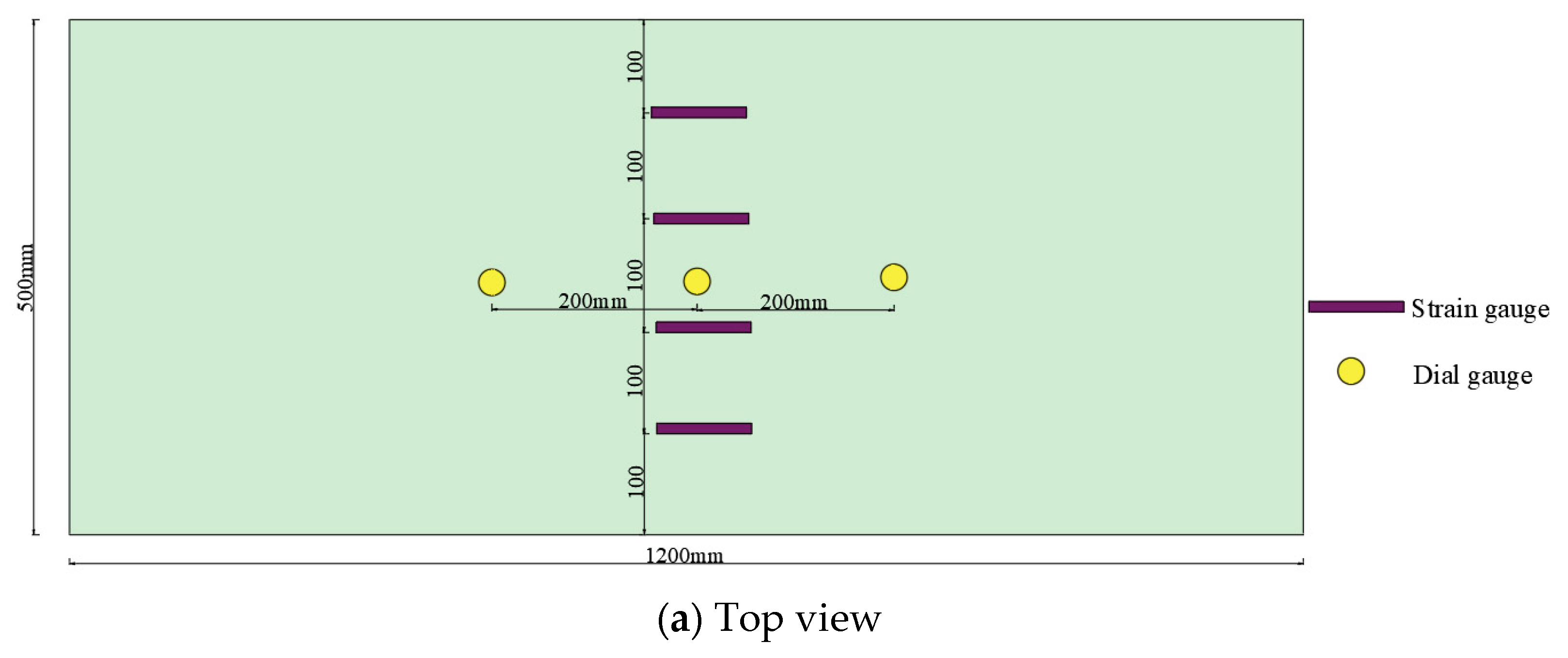

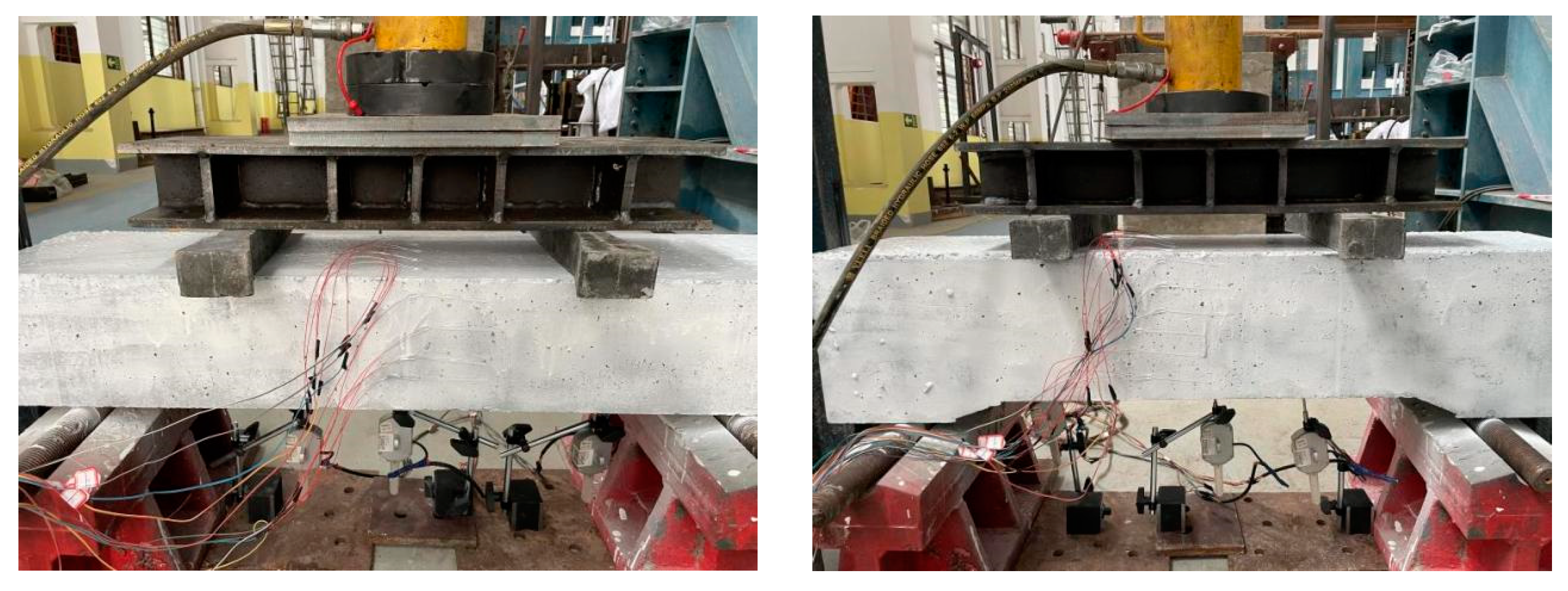
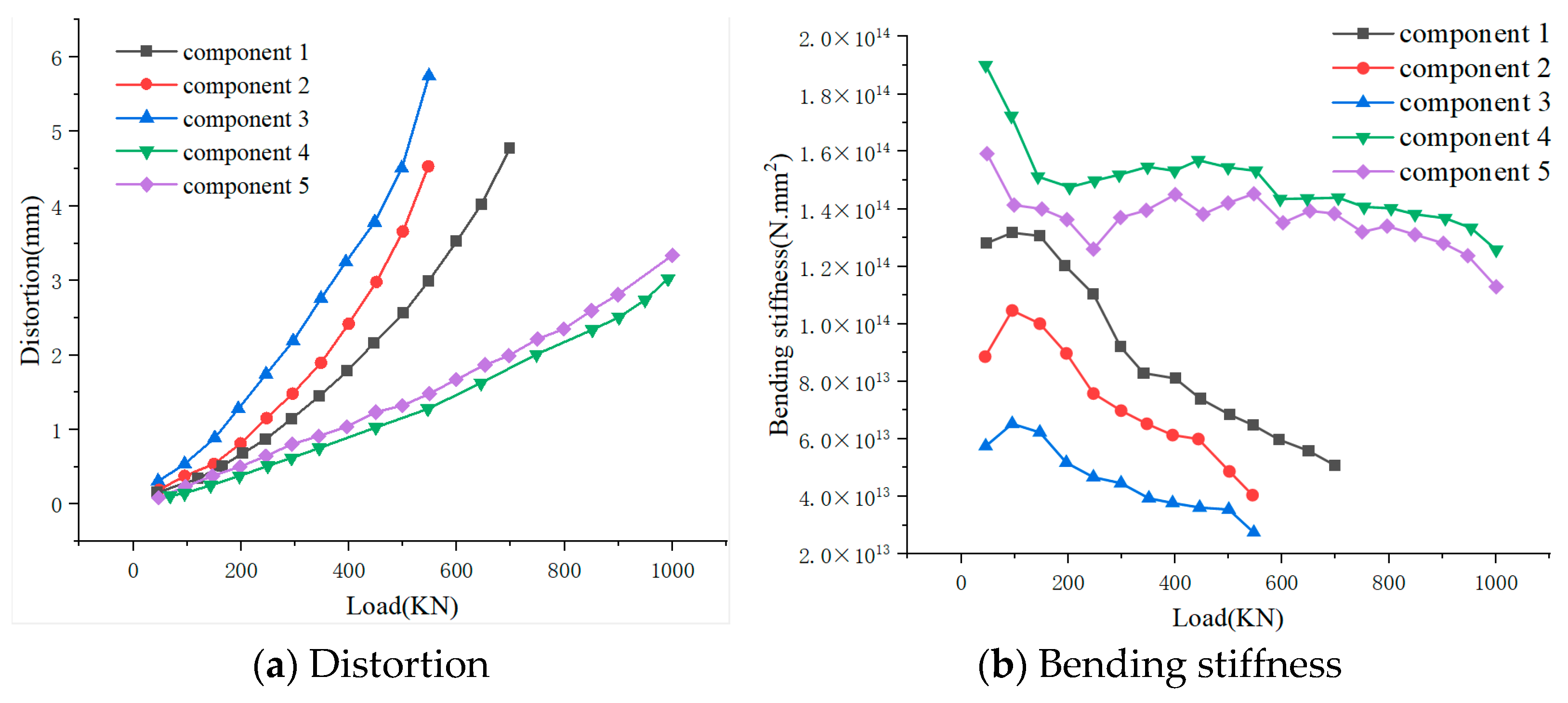


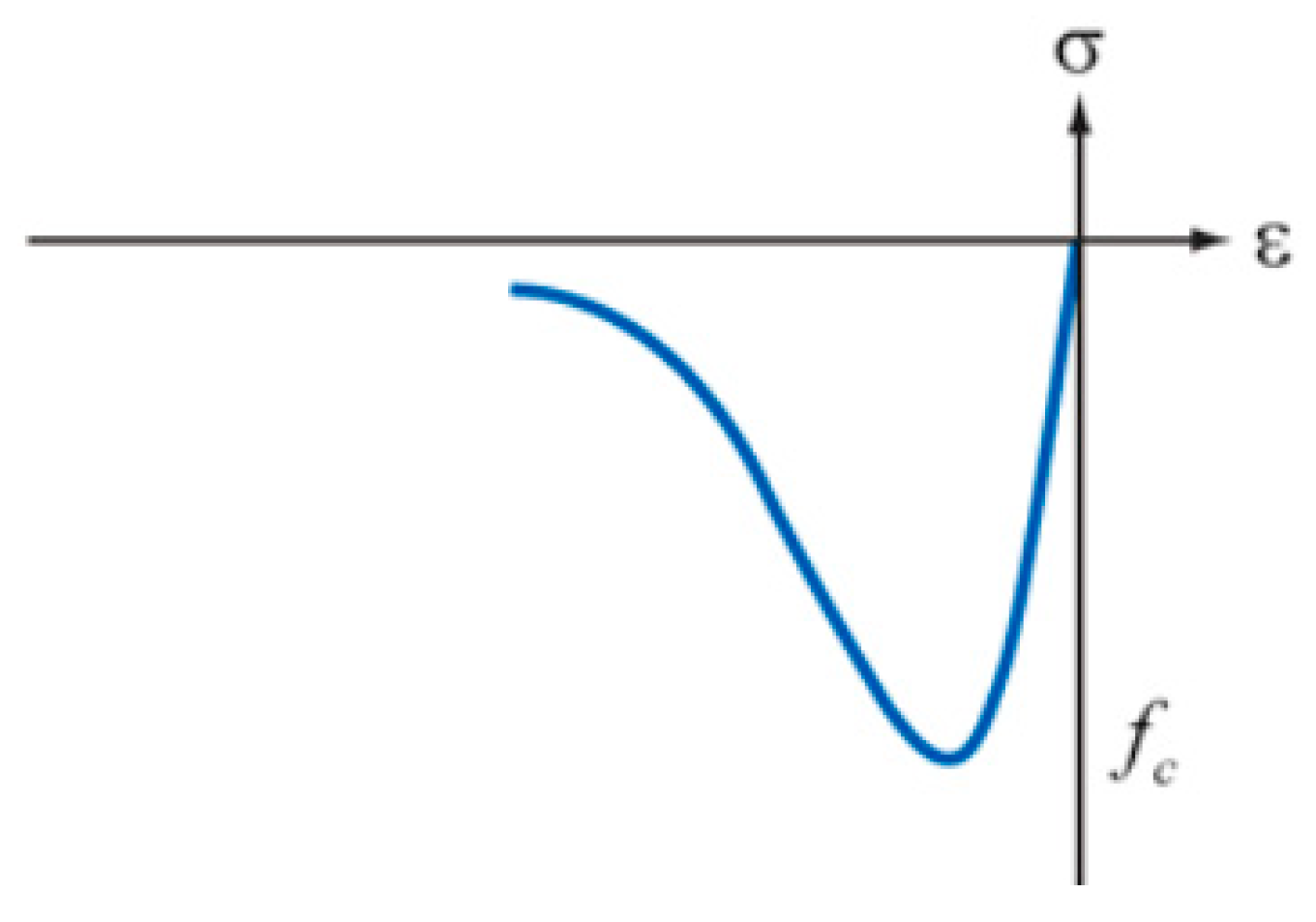

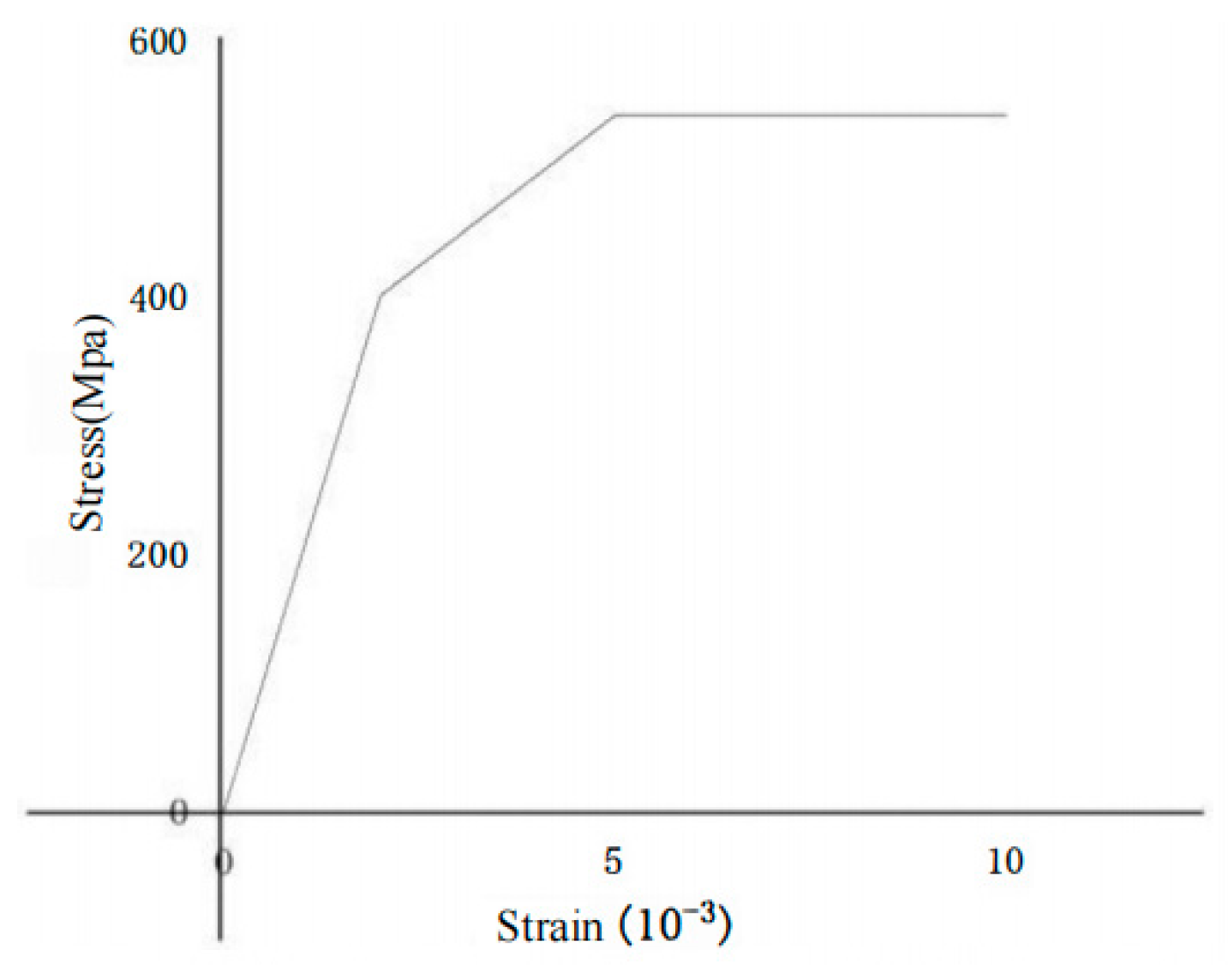


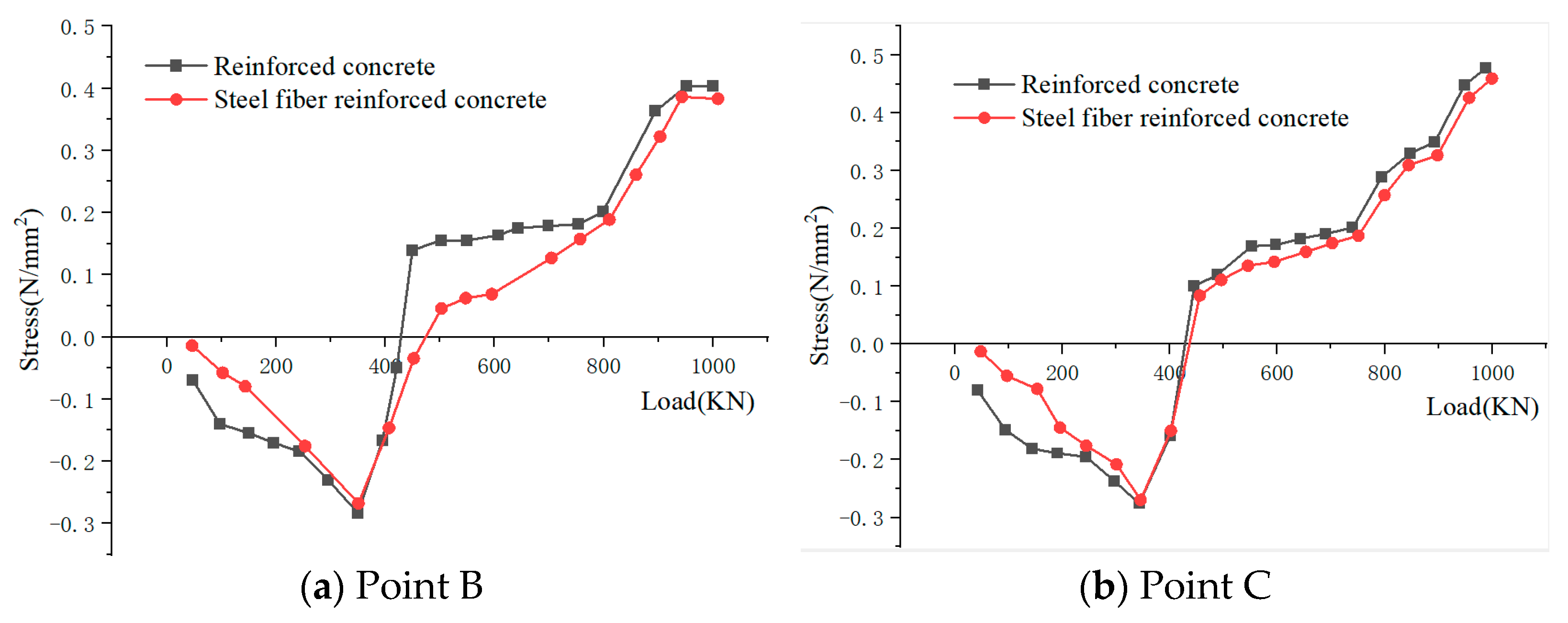

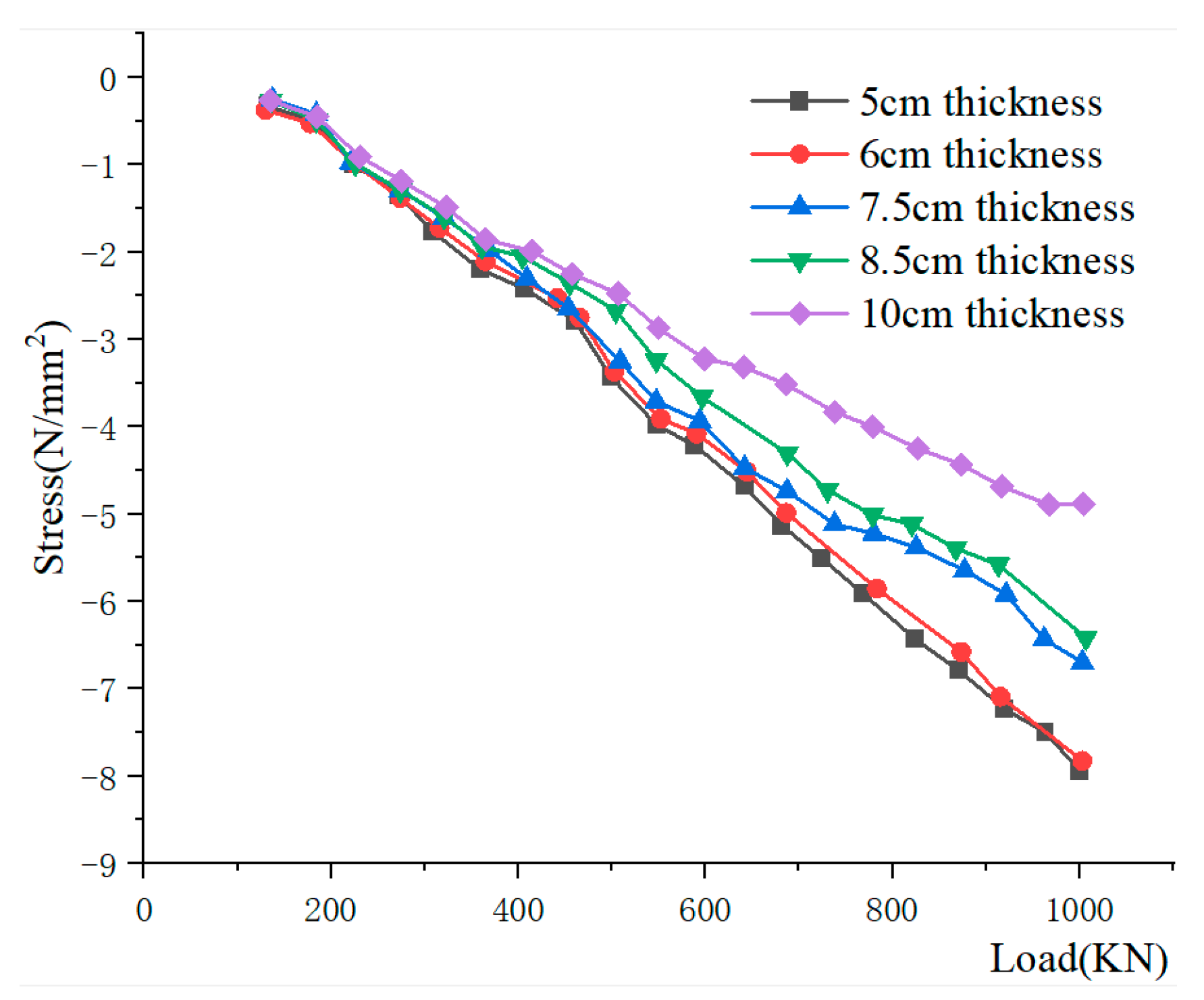

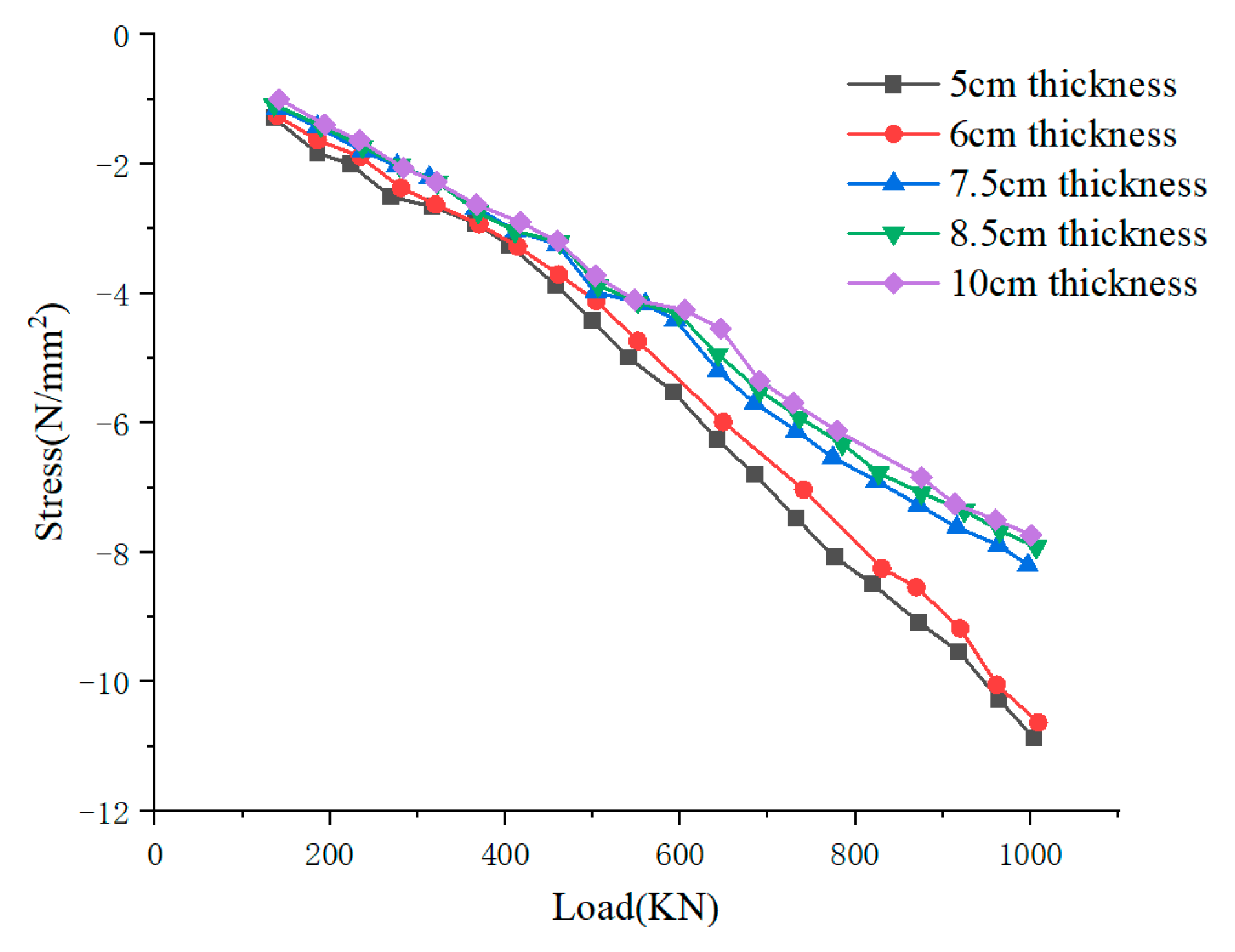
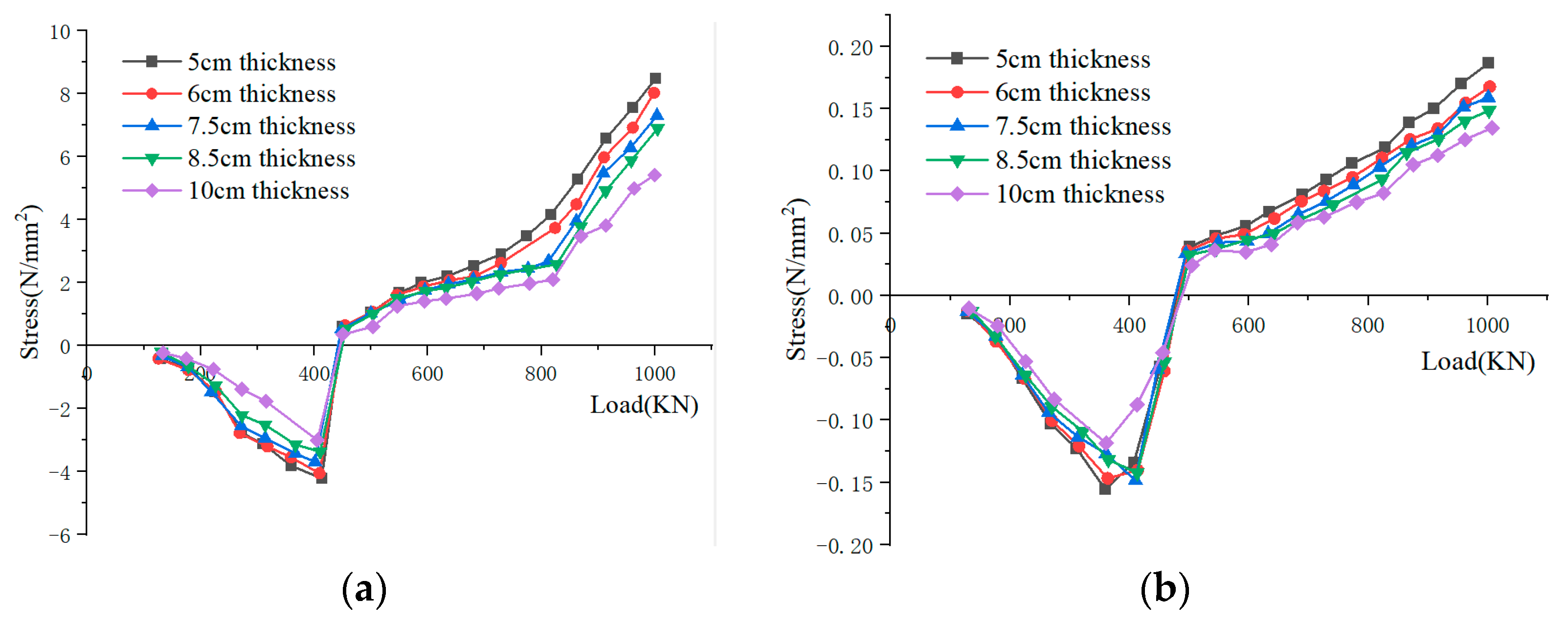
| Material | Density (KN/m3) | Elastic Modulus (Mpa) | Poisson Ratio |
|---|---|---|---|
| C50 steel fiber-reinforced concrete | 25.0 | 34,500 | 0.20 |
| Steel reinforcement | 78.5 | 200,000 | 0.30 |
| C25 concrete | 25.0 | 28,000 | 0.20 |
| Waterproof plate | 8.6 | 10 | 0.45 |
Disclaimer/Publisher’s Note: The statements, opinions and data contained in all publications are solely those of the individual author(s) and contributor(s) and not of MDPI and/or the editor(s). MDPI and/or the editor(s) disclaim responsibility for any injury to people or property resulting from any ideas, methods, instructions or products referred to in the content. |
© 2024 by the authors. Licensee MDPI, Basel, Switzerland. This article is an open access article distributed under the terms and conditions of the Creative Commons Attribution (CC BY) license (https://creativecommons.org/licenses/by/4.0/).
Share and Cite
Zhou, Y.; Lin, Z.; Liu, L.; Zhou, J. Experimental Study on Prefabricated Steel Fiber-Reinforced Concrete Casing Arch Method for Strengthening Cracked Lining in Confined Spaces. Appl. Sci. 2024, 14, 5941. https://doi.org/10.3390/app14135941
Zhou Y, Lin Z, Liu L, Zhou J. Experimental Study on Prefabricated Steel Fiber-Reinforced Concrete Casing Arch Method for Strengthening Cracked Lining in Confined Spaces. Applied Sciences. 2024; 14(13):5941. https://doi.org/10.3390/app14135941
Chicago/Turabian StyleZhou, Yu, Zhi Lin, Lili Liu, and Jianghao Zhou. 2024. "Experimental Study on Prefabricated Steel Fiber-Reinforced Concrete Casing Arch Method for Strengthening Cracked Lining in Confined Spaces" Applied Sciences 14, no. 13: 5941. https://doi.org/10.3390/app14135941
APA StyleZhou, Y., Lin, Z., Liu, L., & Zhou, J. (2024). Experimental Study on Prefabricated Steel Fiber-Reinforced Concrete Casing Arch Method for Strengthening Cracked Lining in Confined Spaces. Applied Sciences, 14(13), 5941. https://doi.org/10.3390/app14135941





